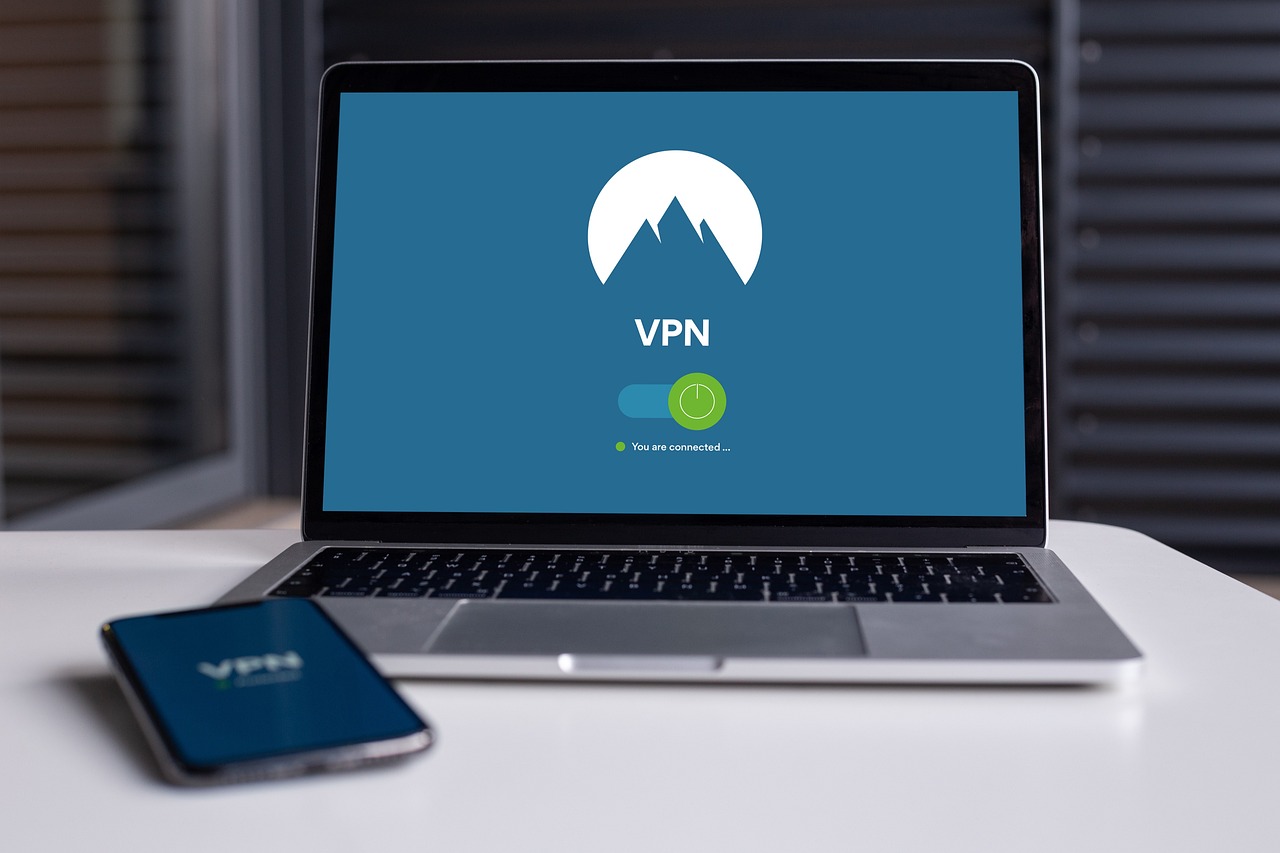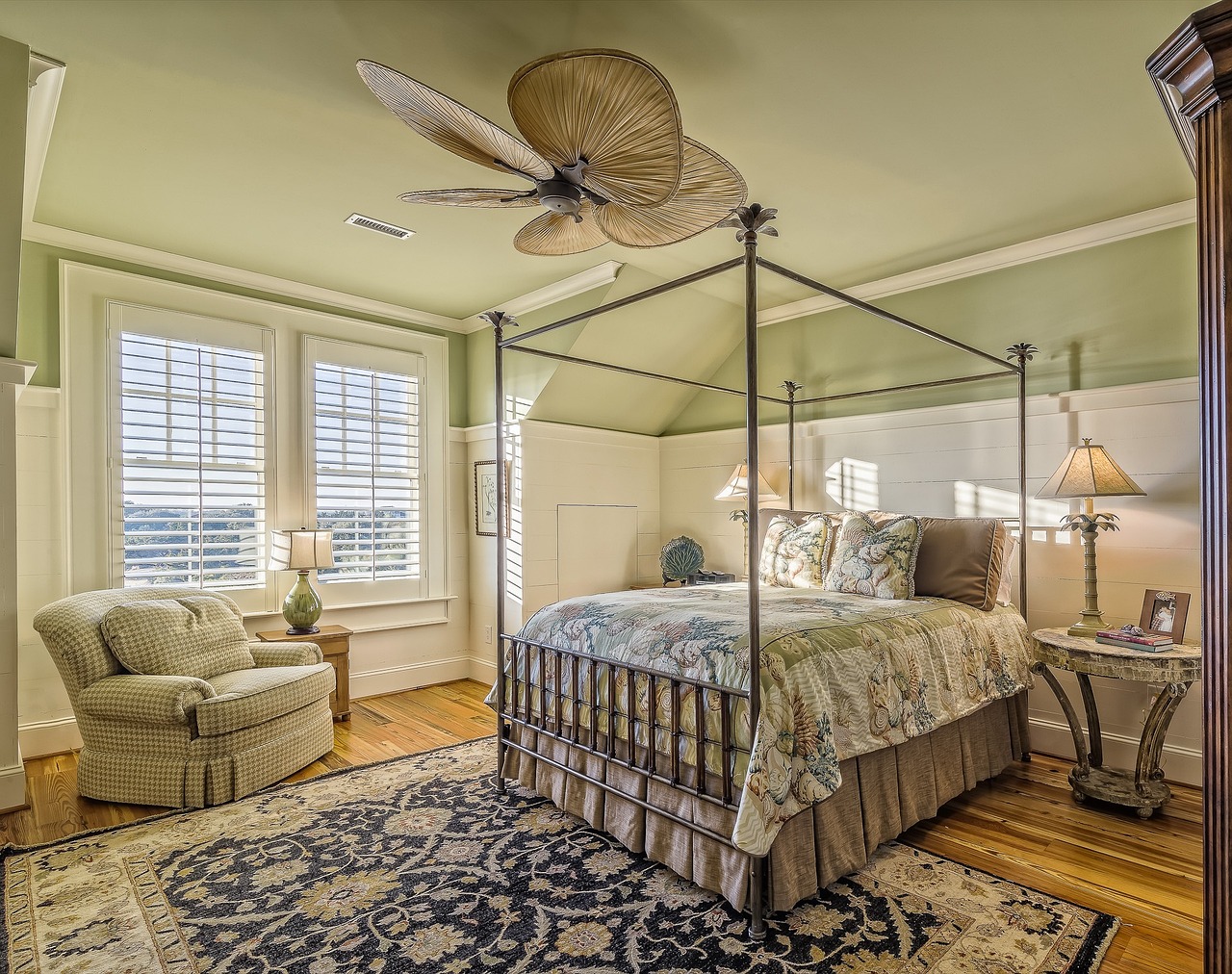Home Security Tips for Single Moms
Being a single mom comes with its own set of challenges, and ensuring the safety of your home and children is undoubtedly at the top of that list. You want to create a sanctuary where your kids can grow and thrive without fear. This article provides essential security tips tailored for single mothers, focusing on practical strategies to enhance home safety and peace of mind for themselves and their children. After all, when it comes to home security, it’s not just about locks and alarms; it’s about creating an environment where you and your children feel secure and empowered.
Identifying potential weaknesses in your home is the first step to improving security. Start by walking around your property and taking note of all possible entry points. Are your doors sturdy? Do your windows lock properly? Even the smallest vulnerabilities can be an open invitation to intruders. Make a list of these areas to address them systematically. Consider the following:
- Check the condition of your doors and windows.
- Inspect outdoor lighting—are there dark areas around your home?
- Evaluate your landscaping; could someone hide behind your bushes?
Once you have identified these vulnerabilities, you can prioritize which areas need immediate attention. Remember, a well-lit exterior and secure entry points can significantly deter potential threats.
With various options available, selecting an appropriate security system can be overwhelming. But fear not! Here, we explore different types of systems and what features to prioritize for maximum protection. It's essential to consider your specific needs, such as whether you want a monitored system or a DIY setup. Look for systems that offer:
- 24/7 monitoring services
- Mobile app access for real-time alerts
- Integration with smart home devices
By focusing on these features, you can ensure that your home is well-protected, even when you’re not there.
Smart home devices offer innovative ways to enhance security. Imagine being able to lock your doors, turn on lights, and monitor your home from your smartphone, all while you’re at the grocery store. Integrating smart technology can provide real-time alerts and remote monitoring capabilities. Devices like smart doorbells or security cameras can keep you informed about who is at your door or what’s happening in and around your home.
Installing cameras can deter intruders and provide evidence if a crime occurs. We’ll review the best types of video surveillance systems suitable for single moms. Look for systems that offer:
- High-definition video quality
- Night vision capabilities
- Cloud storage options for footage
Having a reliable video surveillance system not only protects your home but also gives you peace of mind knowing you can monitor your property from anywhere.
Alarm systems can be a crucial part of home security. Whether you choose a traditional wired system or a modern wireless option, the benefits of professional monitoring services cannot be overstated. These services can alert authorities immediately in case of a breach, ensuring a quick response that could make all the difference. When choosing an alarm system, consider:
- How easy it is to install and use
- Whether it offers features like fire and carbon monoxide detection
- Monthly monitoring fees
A well-thought-out safety plan is essential for single moms. This section outlines how to develop an effective emergency response plan for various scenarios. Sit down with your children and discuss what to do in case of different emergencies, such as a fire or a break-in. Role-playing these scenarios can help them feel more comfortable and prepared. Ensure everyone knows the exits and safe spots in your home, and have a designated meeting place outside in case of an evacuation.
Engaging with your community can significantly enhance your home’s security. Here, we discuss the benefits of participating in or starting a neighborhood watch program. These programs foster a sense of community and collective responsibility, making it harder for criminals to operate unnoticed. Plus, having a network of supportive neighbors can be invaluable, especially for single mothers who may need assistance from time to time.
Strong relationships with neighbors can lead to a safer environment. Take the time to introduce yourself and your children to those living nearby. Organizing community events or simple get-togethers can help foster these ties. When neighbors know each other, they are more likely to look out for one another, creating a united front against crime.
Knowing how to report suspicious behavior is crucial. This section provides guidelines on what to look for and how to communicate with local authorities effectively. If you notice something that feels off, trust your instincts. Document what you see and report it to the police. Providing detailed information can help them respond more effectively. Remember, being proactive can prevent potential threats.
Educating children on safety protocols is vital. This section covers how to instill awareness and responsibility in kids regarding home security measures. Start by teaching them the importance of not opening the door to strangers and how to identify safe adults. Role-playing scenarios where they practice what to do in various situations can empower them and make them feel more secure.
Creating an emergency contact list helps children know who to reach out to in case of danger. We’ll discuss how to compile and display this information effectively. Make sure the list includes:
- Family members
- Close friends or neighbors
- Local emergency services
Display this list prominently in your home, so your children can easily access it when needed.
Practicing safety scenarios through role-playing can prepare kids for real-life situations. This subsection offers tips on how to conduct effective practice sessions with your children. Use everyday situations, like a stranger approaching them at the park, to teach them how to respond. The more they practice, the more confident they will feel in handling emergencies.
Q: What is the best security system for single moms?
A: The best security system depends on your specific needs, but look for features like mobile access, monitoring services, and integration with smart home devices.
Q: How can I make my home less attractive to burglars?
A: Ensure your home is well-lit, keep doors and windows locked, and consider installing security cameras.
Q: How can I involve my kids in home safety?
A: Educate them about safety protocols, create emergency contact lists, and practice role-playing scenarios together.

Assessing Your Home's Vulnerabilities
When it comes to protecting your home, the first step is to identify its vulnerabilities. Think of your home as a fortress; even the strongest castle has its weak points. By understanding where those weak points lie, you can take proactive measures to bolster your defenses. Start by walking around your property and taking a close look at all entry points, such as doors and windows. Are they sturdy? Do they have reliable locks? Remember, a determined intruder will often look for the easiest way in, so make it as difficult as possible.
Next, consider the surrounding areas. Is your home well-lit? Overgrown bushes or trees can provide cover for someone looking to break in. A well-lit exterior not only deters potential intruders but also makes it easier for you to see any suspicious activity. If you find dark spots around your home, consider installing motion-sensor lights to illuminate these areas. Additionally, take note of any blind spots that may obscure your view of the surroundings. You might want to trim back any foliage that could provide hiding spots for unwanted visitors.
Another aspect to assess is the security of your garage and backyard. These areas are often overlooked but can be prime targets for burglars. Ensure that garage doors are equipped with secure locks and that any gates leading to your backyard are also sturdy and well-secured. If you have valuable items in your garage or shed, consider additional security measures, such as a lockbox or a security camera focused on these areas.
As you evaluate your home, it might be helpful to create a vulnerability checklist. This can serve as a guide to what needs immediate attention and what can be improved over time. Here’s a simple example of what your checklist might look like:
| Vulnerability | Action Needed |
|---|---|
| Front Door | Install a deadbolt lock |
| Backyard Fence | Reinforce the gate |
| Windows | Add window locks |
| Exterior Lighting | Install motion-sensor lights |
By taking the time to assess your home's vulnerabilities, you’re not just protecting your belongings; you’re also creating a safe haven for your children. The peace of mind that comes from knowing you’ve taken these steps is invaluable. Remember, safety isn’t just about having the right locks or alarms; it’s about fostering an environment where you and your family can feel secure and at ease.
In conclusion, assessing your home's vulnerabilities is a crucial first step in enhancing your security. By being proactive and making necessary adjustments, you can significantly reduce the risk of a break-in and create a safer environment for your family. Don’t forget to revisit your security measures regularly, as vulnerabilities can change over time. After all, just like a well-tended garden, your home’s security requires ongoing attention and care.

Choosing the Right Security System
When it comes to protecting your home, especially as a single mom, choosing the right security system can feel like navigating a maze. With a plethora of options available, it’s easy to feel overwhelmed by the choices. However, understanding your specific needs and what each system offers can simplify the decision-making process. Start by considering the layout of your home and the areas that require the most protection. Are there multiple entry points? Is there a garage or basement that needs securing? By identifying these factors, you can tailor your security system to fit your lifestyle.
One of the first decisions you'll face is whether to go for a traditional security system or a more modern smart home solution. Traditional systems typically involve alarms and monitoring services, whereas smart home technology incorporates devices like smart locks, cameras, and motion sensors that can be controlled via your smartphone. Smart home technology not only enhances security but also offers convenience, allowing you to monitor your home remotely. Imagine being at work and receiving a notification on your phone that someone is at your front door. This level of control can provide you with peace of mind, knowing you can respond to situations in real-time.
To help you make an informed decision, here’s a quick comparison of the main types of security systems:
| Type of System | Features | Pros | Cons |
|---|---|---|---|
| Traditional Alarm System | Wired alarms, monitoring services | Reliable, established technology | Less flexibility, can be costly |
| Smart Home System | Smart locks, cameras, remote access | Convenient, customizable | Requires internet, potential hacking risks |
| DIY Security Kits | Self-installed cameras, sensors | Cost-effective, easy to install | Less professional support, may lack features |
When selecting a security system, consider the features that matter most to you. For instance, if you have young children at home, you might prioritize systems with video surveillance and motion detection. On the other hand, if you travel frequently, a system that offers remote access and alerts is essential. Don’t forget to check for additional features like home automation compatibility, which allows you to integrate your security system with other smart devices in your home.
Another important aspect to consider is the monitoring options. Many companies offer professional monitoring services, which can be a lifesaver in emergencies. With professional monitoring, your home is monitored 24/7, and authorities can be alerted if an alarm goes off. Alternatively, some systems allow for self-monitoring via mobile apps, giving you the flexibility to manage your home security without a monthly fee. However, this comes with the responsibility of ensuring you're available to respond to alerts.
Finally, always take the time to read reviews and ask for recommendations from friends or family. Their experiences can provide valuable insights into the reliability and customer service of different security systems. Remember, investing in a good security system is not just about protecting your home; it's about ensuring your family's safety and giving you the peace of mind you deserve.
- What is the best security system for single moms? The best system depends on your specific needs, but a combination of smart home technology and professional monitoring often provides the most comprehensive protection.
- How much should I expect to spend on a security system? Costs can vary widely, from a few hundred dollars for DIY systems to several thousand for professionally installed solutions. It's essential to balance your budget with the level of security you require.
- Can I install a security system myself? Yes, many modern security systems are designed for easy DIY installation, making them accessible for those who prefer a hands-on approach.

Smart Home Technology
In today's fast-paced world, is more than just a trend; it's a game-changer for enhancing home security, especially for single moms who juggle numerous responsibilities. Imagine being able to monitor your home from anywhere, whether you're at work, running errands, or even on vacation. With the right smart devices, you can achieve peace of mind knowing that your home is secure and your children are safe.
So, what exactly does smart home technology encompass? At its core, it includes a variety of devices that can be connected to your home network. These devices allow you to control various aspects of your home remotely through your smartphone or tablet. Here are some of the most popular smart home security devices:
- Smart Locks: These locks can be controlled via your smartphone, allowing you to lock or unlock your doors remotely. You can even grant temporary access to trusted friends or family members.
- Smart Cameras: These cameras provide real-time video feeds of your property, allowing you to keep an eye on things while you're away. Many models come with motion detection and night vision capabilities.
- Smart Doorbells: With a built-in camera, smart doorbells let you see who is at your door, even if you're not home. You can communicate with visitors through your smartphone, giving you an added layer of security.
Integrating these devices into your home not only enhances security but also allows for real-time alerts. For instance, if a motion sensor detects movement outside your home, you'll receive an immediate notification on your phone, enabling you to take action if necessary. This proactive approach can deter potential intruders before they even attempt to enter your home.
Moreover, many smart home systems allow for remote monitoring, which means you can check on your home at any time. Whether it’s ensuring that your kids are home safe after school or checking the front porch for deliveries, these devices keep you connected to your home environment. And let’s not forget the convenience factor—imagine being able to turn off your lights or adjust your thermostat while you’re out and about!
When considering smart home technology, it's essential to choose devices that integrate well with one another. Many brands offer ecosystems that work seamlessly together, making it easier for you to manage your home security from a single app. This integration not only simplifies your life but also enhances overall security by allowing you to create automated routines. For example, you can set your lights to turn on automatically at dusk, making it look like someone is home, even when you’re out.
In summary, is a valuable investment for single moms looking to enhance their home security. By leveraging these innovative devices, you can create a safer environment for yourself and your children while enjoying the convenience of modern technology. As the world becomes increasingly connected, embracing these advancements can transform your home into a fortress of safety and peace of mind.
1. What are the benefits of using smart home technology for security?
Smart home technology provides enhanced security features, such as real-time monitoring, remote access, and automated alerts, allowing you to stay connected to your home and respond to potential threats swiftly.
2. Are smart home devices easy to install?
Most smart home devices are designed for easy installation, often requiring no more than a Wi-Fi connection and a smartphone app. Many manufacturers provide step-by-step guides to help you set up your devices quickly.
3. Can I control smart home devices when I'm away from home?
Yes! Smart home devices can be controlled remotely via smartphone apps, enabling you to manage your home security from anywhere in the world.
4. Do smart home devices work without an internet connection?
While some basic functions may work offline, most smart home features, such as remote access and real-time alerts, require an internet connection to function effectively.

Video Surveillance Options
When it comes to enhancing your home security, video surveillance systems can be a game-changer for single moms. Imagine having the ability to keep an eye on your property in real-time, even when you're not at home. This peace of mind is invaluable, especially when you have kids to protect. There are several options available, each with its own set of features and benefits that cater to different needs and budgets.
First, consider the type of cameras that best suit your home. Indoor cameras are perfect for monitoring the interior of your home, while outdoor cameras can help keep an eye on your yard and entrances. Many modern systems offer high-definition video quality, which is essential for clearly identifying faces or license plates in case of an incident. Additionally, look for cameras with night vision capabilities to ensure you have surveillance coverage even in low-light conditions.
Another crucial aspect to think about is the connectivity of your video surveillance system. Many systems today are designed to connect to your home Wi-Fi network, allowing you to access live feeds from your smartphone or tablet. This feature is particularly beneficial for busy single moms who are constantly on the go. With just a few taps on your device, you can check in on your home while running errands or at work.
Here’s a quick overview of some popular video surveillance options:
| Camera Type | Features | Best For |
|---|---|---|
| Indoor Cameras | Two-way audio, motion detection, cloud storage | Monitoring children and pets |
| Outdoor Cameras | Weather-resistant, night vision, wide-angle view | Securing entrances and yards |
| Doorbell Cameras | Live video feed, two-way communication, motion alerts | Monitoring visitors and deliveries |
Moreover, many of these systems come with additional features such as motion alerts that notify you whenever movement is detected. This can be particularly useful for single moms, as it allows you to respond quickly to any unexpected activity around your home. Some advanced systems even offer facial recognition technology, which can help differentiate between familiar faces and potential intruders.
In conclusion, investing in a reliable video surveillance system is one of the smartest decisions you can make for your home security. Not only does it deter potential intruders, but it also provides you with the reassurance that you can monitor your home and loved ones from anywhere. So, as you explore your options, keep in mind the features that matter most to you and your family's safety.
- What is the best type of video surveillance for my home? It depends on your specific needs. Indoor cameras are great for monitoring the interior, while outdoor cameras provide security for entry points.
- Can I access my video surveillance remotely? Yes, most modern systems allow you to view live feeds from your smartphone or tablet.
- Do I need professional installation? While some systems can be easily installed by homeowners, others may require professional installation for optimal placement and functionality.

Alarm Systems and Monitoring Services
When it comes to securing your home, alarm systems are a fundamental component that shouldn't be overlooked. Imagine coming home after a long day, and the thought of an intruder lurking in the shadows sends chills down your spine. With the right alarm system, you can eliminate that fear and enjoy peace of mind. Alarm systems act as a deterrent, alerting you and local authorities to any unauthorized entry, which can be particularly reassuring for single moms who often juggle multiple responsibilities.
There are various types of alarm systems available, each offering unique features tailored to different needs. For instance, some systems are designed to be self-monitored, allowing you to receive alerts directly on your smartphone, while others come with professional monitoring services that provide 24/7 surveillance. Let’s break down some of the key options:
| Type of Alarm System | Features | Pros | Cons |
|---|---|---|---|
| Self-Monitored Systems | Smartphone alerts, remote access | Cost-effective, control over alerts | Requires active monitoring by the homeowner |
| Professional Monitoring | 24/7 monitoring, emergency response | Immediate response, peace of mind | Monthly fees, less control |
| Wireless Systems | Easy installation, flexibility | No drilling required, portable | Potential signal interference |
One of the standout features of modern alarm systems is their integration with smart home technology. This means you can control your alarm system remotely, receive real-time notifications, and even view live camera feeds from your phone. Isn’t it comforting to know that you can check on your home while you’re at work or out running errands? This level of connectivity is a game-changer, especially for single moms who want to ensure their children are safe while they’re away.
Moreover, opting for a professional monitoring service adds an extra layer of security. In the event of a break-in, these services can notify the police or emergency services immediately, ensuring a swift response. This is particularly important for single mothers who may not always be home to react quickly. Imagine knowing that someone is always watching over your home, ready to act at a moment's notice. That’s the kind of reassurance every parent deserves.
In conclusion, investing in a reliable alarm system with monitoring services is not just a precaution; it's a crucial step in safeguarding your home and loved ones. Whether you choose a self-monitored system for its affordability or a professionally monitored service for its comprehensive protection, the peace of mind that comes with knowing your home is secure is invaluable. So, take the time to research and find the right system that fits your lifestyle and needs.
- What is the best type of alarm system for single moms? The best type depends on your specific needs; however, many prefer systems with professional monitoring for added peace of mind.
- Are wireless alarm systems reliable? Yes, wireless systems are generally reliable, but ensure you choose a reputable brand to minimize any potential signal issues.
- How much do alarm systems typically cost? Costs vary widely based on features and monitoring options, but basic systems can start as low as $200, with monthly fees for monitoring services ranging from $10 to $50.
- Can I install an alarm system myself? Many modern systems are designed for easy DIY installation, but if you're unsure, hiring a professional can ensure it’s set up correctly.

Creating a Safety Plan
As a single mom, the safety of your home and children is paramount. Crafting a safety plan is not just a precaution; it’s a proactive approach to ensuring peace of mind. Think of it as your family's emergency playbook. You wouldn’t enter a big game without a strategy, right? Similarly, having a well-thought-out safety plan can make all the difference in a crisis. So, where do you start?
First, gather your family and discuss potential emergency scenarios. This could range from natural disasters like fires or earthquakes to more personal threats like home invasions. Each family member should understand their role in these situations. For instance, if there’s a fire, who grabs the emergency bag? Who calls 911? Open communication is key, and it’s important that everyone feels comfortable voicing their concerns and suggestions.
Next, create a designated meeting place outside your home. In the event of an emergency, it’s crucial that everyone knows where to go. This could be a neighbor’s house or a nearby park. Make sure the location is safe and easily accessible. Practice this plan regularly. Just like rehearsing for a school play, role-playing these scenarios can help your kids feel more confident and prepared.
Another essential aspect of your safety plan is establishing an emergency contact list. This list should include family members, trusted friends, and local authorities. Make sure to display this list in a visible area, like on the fridge or in a shared family calendar. It’s a simple yet effective way for your children to know who to reach out to in case of danger. Consider using a table to organize this information:
| Name | Relationship | Phone Number |
|---|---|---|
| Mom | Parent | (123) 456-7890 |
| Grandma | Relative | (098) 765-4321 |
| Neighbor | Friend | (555) 123-4567 |
| Police | Authority | 911 |
Lastly, make sure to review and update your safety plan regularly. As your children grow, their understanding of safety will evolve, and new potential threats may arise. Keeping your plan current ensures that it remains effective. You might even consider conducting a family safety drill once every few months to keep everyone sharp. Think of it as a family tradition that not only builds confidence but also strengthens your bond.
In conclusion, creating a safety plan is not just about preparing for the worst; it’s about empowering yourself and your children. By establishing clear roles, practicing emergency scenarios, and maintaining open lines of communication, you can turn anxiety into assurance. Remember, in the world of home security, preparation is your best defense.
Q: What should I include in my emergency contact list?
A: Your emergency contact list should include family members, trusted friends, and local emergency services. Make sure to have phone numbers easily accessible and displayed prominently in your home.
Q: How often should I practice my safety plan?
A: It’s a good idea to practice your safety plan at least once every few months. Regular drills help everyone remember their roles and build confidence in handling emergencies.
Q: What are some common emergency scenarios I should prepare for?
A: Common scenarios include fires, natural disasters, intruder situations, and medical emergencies. Tailor your plan based on your home environment and local risks.
Q: How can I teach my children about safety without scaring them?
A: Use role-playing and fun activities to teach safety. Make it interactive and engaging, so they understand the importance without feeling fearful.

Neighborhood Watch Programs
Engaging with your community through can significantly enhance your home’s security. These programs are designed to foster a sense of community and vigilance among neighbors, making it harder for crime to occur. Imagine a neighborhood where everyone looks out for one another; that’s the essence of a Neighborhood Watch. By participating, you’re not just protecting your own home, but you’re also contributing to the safety and well-being of your entire community.
One of the primary benefits of joining a Neighborhood Watch is the opportunity to build strong relationships with your neighbors. When you know the people living around you, you’re more likely to notice when something seems out of place. For instance, if you see an unfamiliar vehicle parked outside a neighbor's house for an extended period, you can alert them or take action if needed. This level of awareness creates a supportive network that can deter potential criminals.
Moreover, a Neighborhood Watch can also serve as a platform for sharing important information about local crime trends and safety tips. Regular meetings can be held to discuss any suspicious activities or incidents that have occurred in the area. During these meetings, you can also exchange ideas about improving safety measures, whether that means organizing community patrols or simply sharing contact information for local law enforcement.
To get started with a Neighborhood Watch, consider the following steps:
- Talk to your neighbors about the idea and gauge their interest.
- Contact your local police department for resources and support.
- Organize an initial meeting to discuss goals and establish a communication plan.
- Set up a communication channel, such as a group chat or email list, to share updates.
Additionally, it’s crucial to educate yourself and your neighbors on what constitutes suspicious behavior. This knowledge empowers everyone to act appropriately and report concerns to local authorities. For example, if you notice someone loitering around your street late at night or trying to peep into windows, it’s essential to know how to report this behavior effectively. Having a clear understanding of what to look for can make all the difference in ensuring your neighborhood remains safe.
In conclusion, participating in a Neighborhood Watch Program can create a safer environment for you and your children. By fostering relationships with your neighbors and staying vigilant, you can help build a community that prioritizes safety. Remember, it takes a village to raise a child, and in the realm of home security, it takes a community to keep everyone safe.
Q: What is a Neighborhood Watch Program?
A: A Neighborhood Watch Program is a community-based initiative where residents work together to monitor each other’s homes and report suspicious activities to local law enforcement.
Q: How do I start a Neighborhood Watch in my area?
A: Begin by discussing the idea with your neighbors, contact your local police department for guidance, and organize an initial meeting to establish goals and communication methods.
Q: What should I do if I notice suspicious activity?
A: Document the suspicious behavior and report it to local authorities. It's important to remain calm and not confront the individual directly.
Q: Are Neighborhood Watch Programs effective?
A: Yes, studies have shown that communities with active Neighborhood Watch Programs experience lower crime rates and increased community engagement.

Building Relationships with Neighbors
Building strong relationships with your neighbors is not just about exchanging pleasantries; it's about creating a supportive community that looks out for one another. When you live in a neighborhood where everyone knows each other, you cultivate a sense of belonging and safety. Imagine having someone you can trust to keep an eye on your home when you're not around or to lend a helping hand in times of need. The benefits are endless!
Start by introducing yourself to your neighbors, perhaps with a friendly wave or a quick chat when you see them outside. You could even consider hosting a small gathering, like a barbecue or a coffee morning, to break the ice. This not only allows you to meet your neighbors but also gives them a chance to meet each other, fostering a sense of community. Remember, it doesn’t have to be a grand event; even a casual get-together can work wonders!
Once you've established those initial connections, consider organizing regular neighborhood activities. This could be anything from a weekly walking group to a book club or even a community garden. These activities create opportunities for bonding and make it easier to discuss important topics like home safety and security. When neighbors work together, they can share valuable information, such as local crime trends or effective safety measures.
Moreover, don’t shy away from discussing security concerns with your neighbors. If you notice anything suspicious in the area, bring it up during your conversations. This not only helps keep everyone informed but also encourages a proactive approach to neighborhood safety. You might even find that your neighbors have their own tips and tricks for keeping their homes secure, which can be incredibly beneficial for you as well.
In addition, consider forming a neighborhood watch program. This doesn’t have to be an official organization, but simply a group of neighbors committed to looking out for each other. You can create a shared communication channel, like a group chat or a community board, where everyone can report any unusual activity. By staying connected, you'll create a network of vigilance that can deter potential intruders.
To sum it up, building relationships with your neighbors is a crucial step in enhancing your home security. By fostering a sense of community, you not only create a safer environment but also enrich your life with friendships and support. Remember, it’s all about connection—the more connected you are, the safer you’ll feel!
- How can I approach my neighbors if I'm shy? Start with simple greetings and gradually engage in small talk. You can also invite them to community events to ease into conversations.
- What if my neighbors are not friendly? Sometimes, people are just busy or preoccupied. Keep trying to connect; you might be surprised by their response over time.
- How can I encourage my neighbors to participate in safety discussions? Share your concerns openly and suggest regular meetings or casual get-togethers focused on safety topics.

Reporting Suspicious Activity
When it comes to home security, being vigilant about your surroundings is crucial, especially for single moms who often juggle multiple responsibilities. not only protects your home but also fosters a sense of community safety. So, what should you look for? Suspicious behavior can range from unfamiliar individuals loitering around your property to vehicles parked for an extended period without any apparent reason. Keeping an eye out for these signs can make a significant difference.
It's essential to trust your instincts. If something feels off, it probably is. Documenting details such as the time, location, and description of the person or vehicle involved can be incredibly helpful when you report your concerns. For instance, if you notice a person acting strangely near your home, jot down their clothing, any distinguishing features, and the direction they headed. This information can aid law enforcement in their investigation.
When you decide to report suspicious activity, consider the following steps:
- Contact local law enforcement: Use the non-emergency number for non-urgent situations, but always call 911 if you feel threatened or if a crime is in progress.
- Provide clear and concise information: Be specific about what you observed and why you found it concerning. The more detail you provide, the better.
- Follow up if necessary: If you notice a pattern of suspicious behavior, don’t hesitate to reach out again. Keeping the authorities informed can lead to more proactive measures in your community.
Additionally, consider engaging with your neighbors. Creating a network where everyone looks out for one another can be incredibly effective. If you see something suspicious, let your neighbors know; they might have noticed similar behavior. Remember, communication is key in building a secure environment.
In today's world, many communities utilize technology to enhance safety. Apps and platforms designed for neighborhood watch programs can help facilitate the reporting process. These tools allow you to share alerts and updates with your neighbors quickly, creating a more connected community. It’s like having a virtual neighborhood watch right at your fingertips!
Ultimately, reporting suspicious activity is not just about protecting your home; it’s about creating a safer environment for you and your children. By being proactive, staying aware, and communicating with those around you, you contribute to a community culture that values safety and vigilance.
Q: What should I do if I see someone suspicious near my home?
A: Trust your instincts. If you feel uncomfortable, document what you see and report it to the local authorities. If you feel threatened, call 911.
Q: How can I encourage my neighbors to report suspicious activity?
A: Start by having open conversations about safety. Consider organizing a neighborhood meeting to discuss security concerns and establish a mutual support system.
Q: Is it really necessary to report every suspicious activity?
A: While you don’t need to report every minor incident, consistent reporting of unusual behavior helps law enforcement identify patterns and address potential threats more effectively.

Teaching Kids About Home Safety
When it comes to keeping our homes safe, one of the most important steps is teaching our children about home safety. After all, kids are naturally curious and may not always recognize potential dangers. So, how do we arm them with the knowledge they need to stay safe? It all starts with open communication and practical lessons that can empower them to be aware of their surroundings.
First and foremost, it's essential to have a family discussion about safety. Sit down with your kids and explain why home safety matters. Use relatable scenarios to help them understand. For example, you could say, "Just like we wear helmets when riding our bikes to protect our heads, we have safety rules at home to keep us safe." This analogy can make the concept of safety more relatable and less intimidating.
One effective way to teach your kids about home safety is by creating an emergency contact list. This list should include important phone numbers such as those of family members, neighbors, and local emergency services. Make it a fun project by letting your kids decorate the list and choose a place to hang it, like on the refrigerator or in their bedroom. Not only does this ensure they know who to contact in case of an emergency, but it also gives them a sense of responsibility.
Another crucial aspect of teaching kids about home safety is role-playing scenarios. This method allows children to practice what they would do in various situations, such as a fire or an intruder in the house. You could set up a mock drill where they have to find the safest exit in case of a fire or call 911 during a simulated emergency. Role-playing not only makes the learning process interactive but also helps reduce anxiety by familiarizing them with potential situations.
Additionally, you can create a home safety checklist together. Walk through your home and identify areas that need to be secured. For instance, check if windows are locked, doors are bolted, and that there are no obstacles blocking emergency exits. This activity not only teaches them about safety but also gives them a sense of ownership over their environment.
It's also vital to discuss the importance of reporting suspicious activity. Teach your children what to look for, such as unfamiliar vehicles parked near your home or strangers lingering around. Encourage them to come to you or another trusted adult if they notice anything unusual. This way, they understand that being vigilant is part of staying safe.
Lastly, consider using visual aids to reinforce your lessons. Charts and posters that outline safety rules can serve as constant reminders. You can create a colorful poster with phrases like "Always lock the door behind you" or "Never open the door for strangers." Hang it in a place where your kids will see it regularly, like their bedroom or the hallway.
In conclusion, teaching kids about home safety is not just about imparting knowledge; it's about creating a culture of safety within your home. By involving them in discussions, role-playing, and practical activities, you help them develop a sense of responsibility and awareness that can last a lifetime. Remember, the goal is to make safety engaging and informative, ensuring that your children feel empowered and equipped to handle any situation that may arise.
Q: At what age should I start teaching my kids about home safety?
A: It's never too early to start! Even toddlers can learn basic safety rules. As they grow older, you can introduce more complex concepts.
Q: How can I make safety lessons fun for my kids?
A: Incorporate games, role-playing, and creative projects like making safety posters. The more interactive, the better!
Q: What should I include in an emergency contact list?
A: Include family members, trusted neighbors, local emergency services, and any other important contacts. Make sure your kids know how to reach these contacts.
Q: How often should we review our home safety plan?
A: It's a good idea to review your safety plan at least once a year or whenever there are significant changes in your household.

Emergency Contact Lists
Creating an emergency contact list is not just a good idea; it’s a vital step in ensuring your family's safety. Imagine your child in a situation where they need help, but they can't remember who to call. This is where a well-organized contact list comes into play. Start by gathering important phone numbers that your children can easily access. This list should include:
- Family Members: Immediate family, such as grandparents or aunts and uncles, can be crucial contacts in emergencies.
- Neighbors: Having the contact information of nearby friends or trusted neighbors can provide quick assistance.
- Emergency Services: Include local police, fire department, and medical services.
- School Contacts: List the school’s phone number and any emergency contacts provided by the school.
- Doctors and Pediatricians: Having the contact numbers of your child's doctor can be essential during health emergencies.
Once you have compiled this list, it’s crucial to display it prominently in your home. Consider placing it on the refrigerator or inside a cabinet door where your children can easily find it. You might also create a small card that they can carry in their backpack or wallet. This way, they will have access to these numbers no matter where they are.
To make this list even more effective, you could introduce your children to the concept of emergency protocols. For example, teach them how to dial 911 and explain when it's appropriate to do so. Role-playing different scenarios can also help them feel more comfortable in case they ever need to use these contacts. Imagine your child confidently knowing exactly what to do in a crisis, thanks to the preparation you've done together!
Lastly, remember to review and update this list regularly. People move, change numbers, or may no longer be the right contacts for emergencies. Regularly checking in with family and neighbors will ensure that your emergency contact list remains relevant and useful. By taking these steps, you're not just preparing for the unexpected; you're empowering your children to take charge of their safety.
Q: What should I include in my emergency contact list?
A: Include family members, trusted neighbors, emergency services, school contacts, and medical professionals.
Q: Where should I keep the emergency contact list?
A: Display it in a visible location, such as on the refrigerator, and provide a copy for your child's backpack.
Q: How often should I update the emergency contact list?
A: Review and update the list regularly, especially after significant life changes, like moving or changing schools.

Role-Playing Scenarios
When it comes to teaching your kids about home safety, can be one of the most effective methods. Imagine this: your child is at home alone, and suddenly they hear a strange noise outside. What should they do? Instead of leaving them to figure it out in a moment of panic, you can prepare them through practice. Role-playing allows children to experience potential situations in a safe environment, giving them the confidence to react appropriately when faced with real-life challenges.
Start by identifying common scenarios that could occur in your home. For instance, you might role-play a stranger knocking at the door, a fire alarm going off, or a lost pet situation. Each of these scenarios can teach valuable lessons about safety. During the role-play, encourage your child to think critically about their options. Ask questions like, "What would you do if someone you didn't know asked to come inside?" or "How would you react if you smelled smoke?" This not only engages their imagination but also helps them develop problem-solving skills.
It's also beneficial to create a safe word that your child can use in any emergency. This word should be something only your family knows and can serve as a signal that they should trust the person asking for help. For example, if a neighbor comes to the door and uses the safe word, your child can feel more secure in letting them in. Role-playing this scenario can help reinforce the importance of the safe word and what it means.
Additionally, consider setting up a mock emergency drill at home. You can simulate an emergency situation, such as a fire, and guide your child on how to exit the house safely. Use a timer to add a bit of urgency to the drill, making it feel more realistic. Afterwards, discuss with your child how they felt during the drill and what they learned. This reflection is crucial as it helps them internalize the lessons learned.
Lastly, remember to keep these sessions fun and engaging. The goal is not to scare them but to empower them. Praise their efforts and encourage them to ask questions. You can even turn it into a game by rewarding them with stickers or small prizes for completing scenarios successfully. By making safety education enjoyable, you're more likely to instill lasting knowledge that they will carry with them into adulthood.
- How often should I conduct role-playing scenarios with my kids? It's a good idea to practice these scenarios regularly, perhaps once a month, to keep the information fresh in their minds.
- What age is appropriate to start role-playing safety scenarios? You can begin teaching basic safety concepts as early as preschool age, adapting the complexity of scenarios as they grow.
- What if my child is scared during role-playing? If your child seems frightened, reassure them that it's just practice and that you are there to help them. Tailor the scenarios to their comfort level.
Frequently Asked Questions
- What are the first steps I should take to assess my home's vulnerabilities?
Start by walking around your property and looking for any weak points. Check all entry points like doors and windows to ensure they are secure. Consider factors such as outdoor lighting, visibility from the street, and any overgrown bushes that could provide cover for intruders. Making a list of these vulnerabilities can help you prioritize what needs to be addressed first.
- How do I choose the right security system for my home?
Choosing the right security system can feel overwhelming, but focus on your specific needs. Consider whether you want a traditional alarm system, a smart home setup, or a combination of both. Look for features like remote access, mobile alerts, and professional monitoring. Reading customer reviews and comparing different systems can also help you make an informed decision.
- What are the benefits of smart home technology for security?
Smart home technology enhances security by providing real-time alerts and remote monitoring capabilities. You can control locks, cameras, and alarms from your smartphone, giving you peace of mind even when you’re not home. Plus, many smart devices integrate seamlessly with each other, creating a comprehensive security network that’s easy to manage.
- How can I create an effective safety plan for my family?
Start by identifying potential emergency scenarios, such as fire, break-ins, or natural disasters. Discuss these scenarios with your children and establish clear protocols for each situation. Make sure everyone knows where to go, who to call, and what to do in case of an emergency. Regularly review and practice the plan to ensure everyone feels confident and prepared.
- What should I do if I notice suspicious activity in my neighborhood?
If you see something suspicious, it’s important to trust your instincts. Take note of details such as descriptions of people, vehicles, and the time of day. Report this information to local authorities or your neighborhood watch program. Keeping an open line of communication with neighbors can also help everyone stay vigilant and informed.
- How can I teach my kids about home safety?
Teaching kids about home safety can be fun and engaging! Start by explaining the importance of being aware of their surroundings and knowing how to react in different situations. Create an emergency contact list and display it prominently in your home. Role-playing different scenarios can also help kids practice what to do in case of an emergency, making them feel more prepared and confident.



















